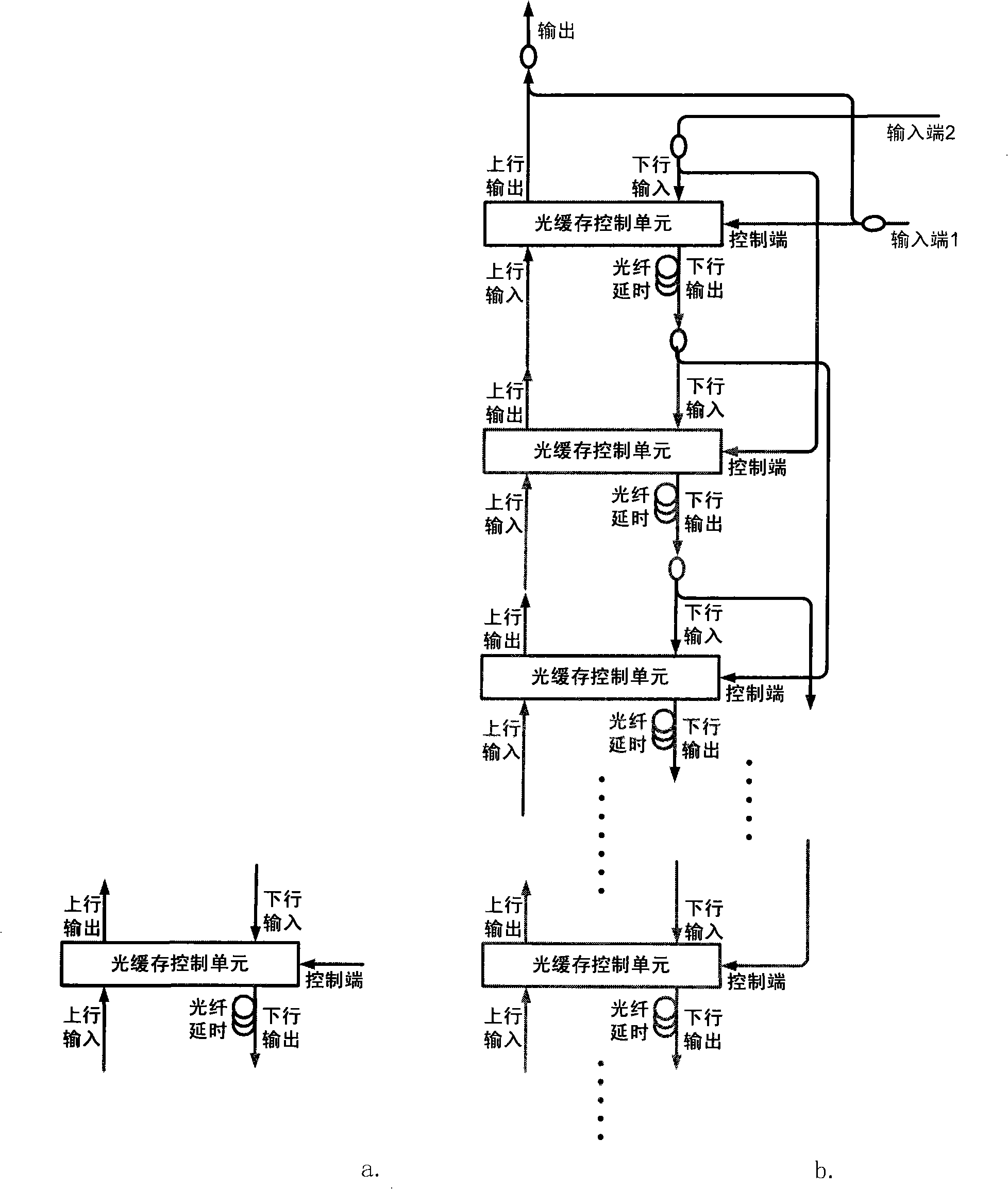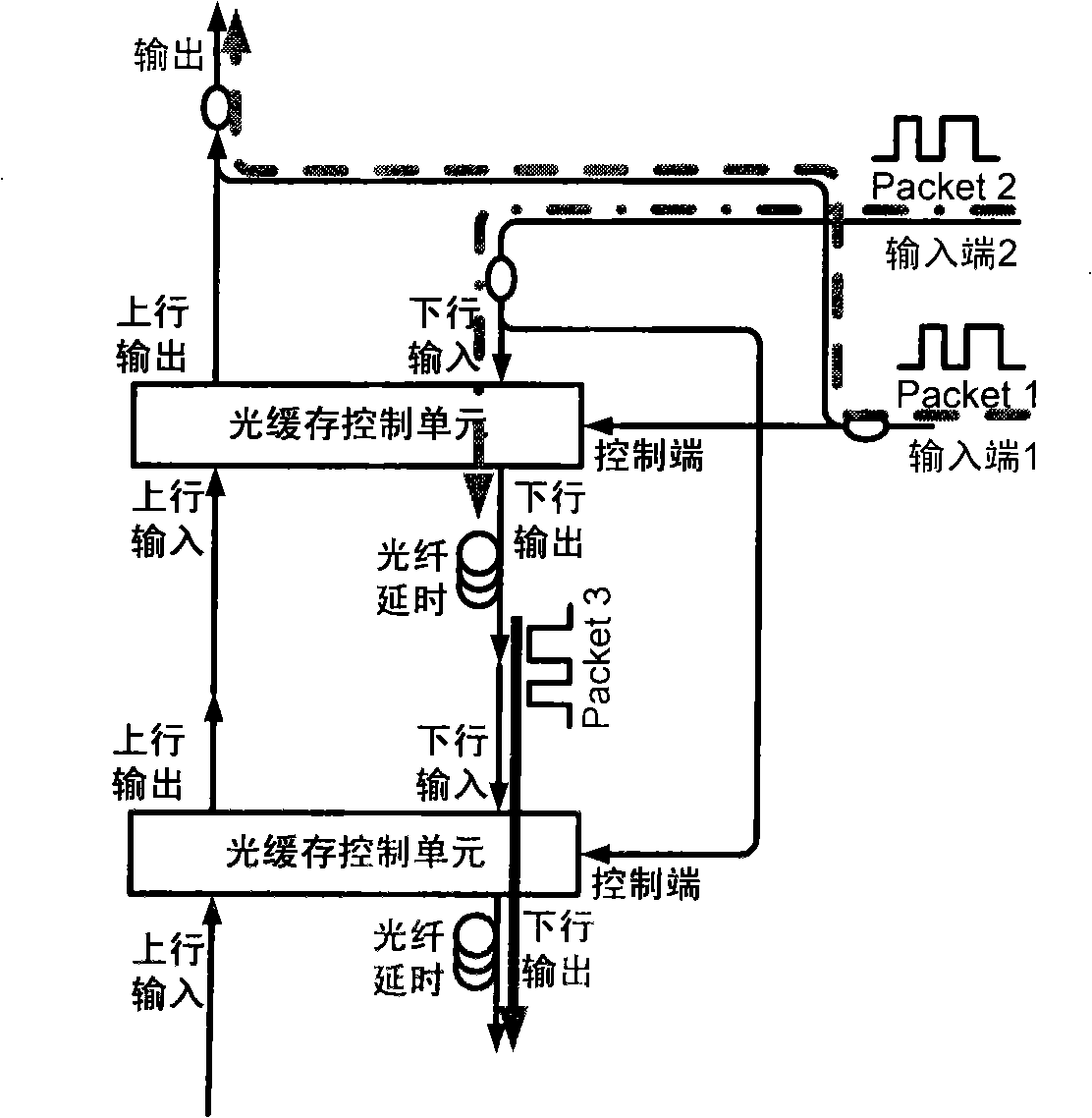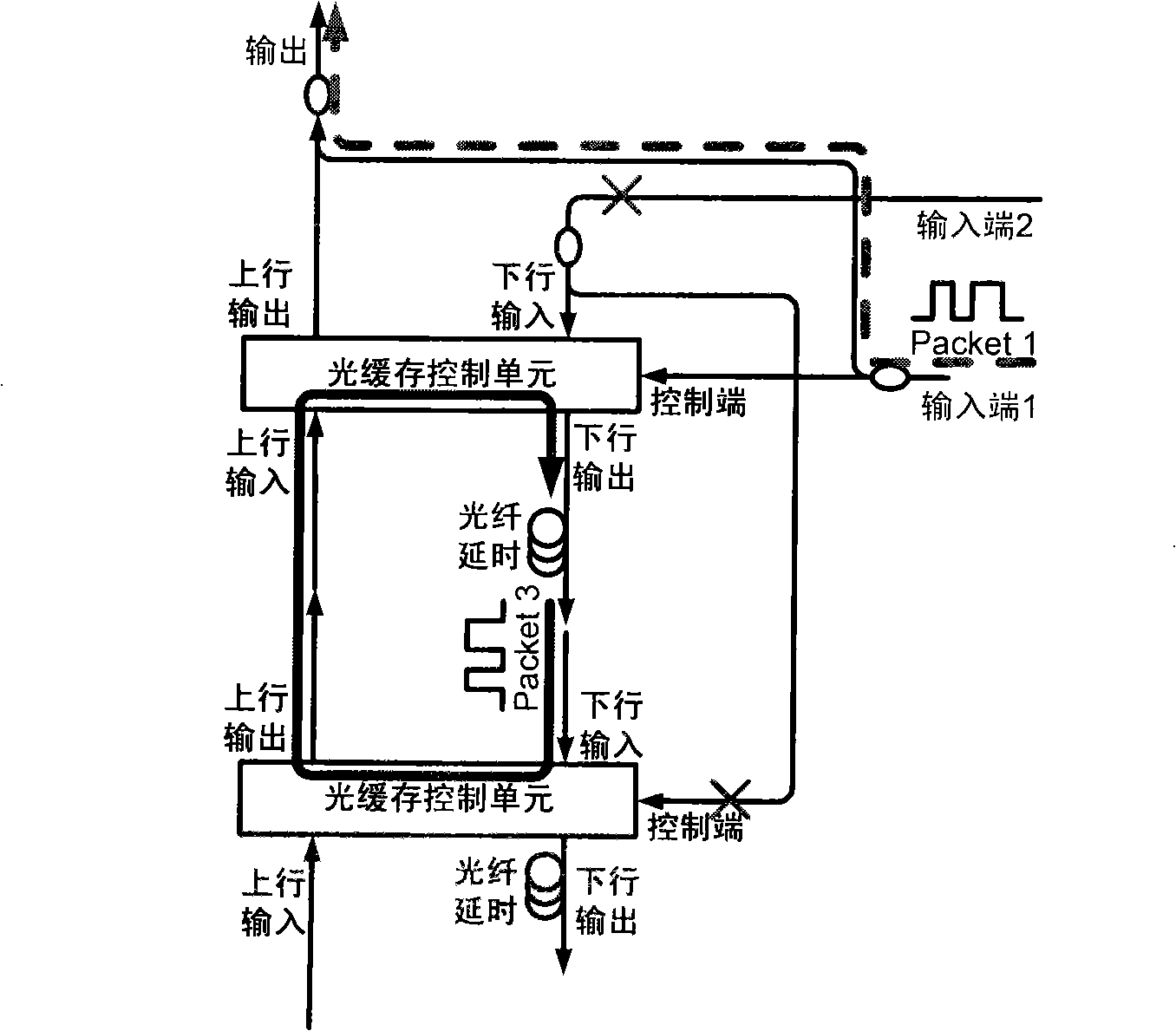Stack type whole optical caching device
An optical buffer and stack technology, applied in the field of information optoelectronics, can solve the problems of increasing the complexity of the system, unable to expand the capacity, and unable to intelligently control the buffering time of data packets.
- Summary
- Abstract
- Description
- Claims
- Application Information
AI Technical Summary
Problems solved by technology
Method used
Image
Examples
Embodiment Construction
[0039] The present invention proposes a stacked all-optical buffer with continuously expandable storage capacity, which can simultaneously process two data packets arriving at the cache, intelligently control the storage and reading of data packets according to the network data flow, and flexibly determine the storage time and memory depth. Its system block diagram is as figure 1 As shown, it is formed by cascading multiple light control units, which is a first-in-last-out, last-in-first-out stacked storage structure. The cache of the data packet is realized through the delay fiber between the control units at all levels.
[0040] Such as figure 1 As shown in .a, each level of optical control unit has 1 control terminal and 4 data terminals, which are uplink input terminal and downlink input terminal, uplink output terminal and downlink output terminal. The uplink output terminals of each level of units are sequentially connected with the uplink input terminals of the upper...
PUM
 Login to View More
Login to View More Abstract
Description
Claims
Application Information
 Login to View More
Login to View More - R&D
- Intellectual Property
- Life Sciences
- Materials
- Tech Scout
- Unparalleled Data Quality
- Higher Quality Content
- 60% Fewer Hallucinations
Browse by: Latest US Patents, China's latest patents, Technical Efficacy Thesaurus, Application Domain, Technology Topic, Popular Technical Reports.
© 2025 PatSnap. All rights reserved.Legal|Privacy policy|Modern Slavery Act Transparency Statement|Sitemap|About US| Contact US: help@patsnap.com



